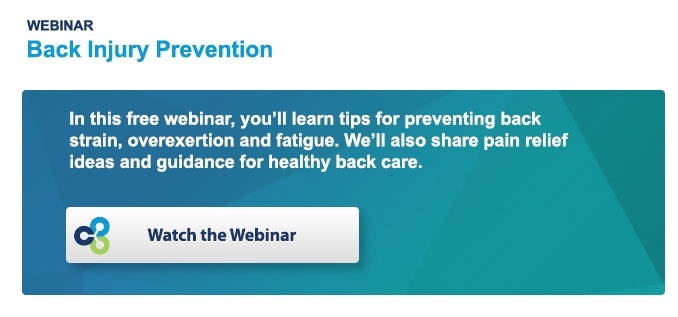 Creating a safety culture in the workplace is one of the best ways to keep your employees accident-free. Not only does everyone return home safely, it can lower your workers’ compensation risk – and therefore, your premium. Your employees will appreciate it, too, and want to participate in looking out for themselves, each other and the organization as a whole.
Creating a safety culture in the workplace is one of the best ways to keep your employees accident-free. Not only does everyone return home safely, it can lower your workers’ compensation risk – and therefore, your premium. Your employees will appreciate it, too, and want to participate in looking out for themselves, each other and the organization as a whole.
A safety culture in the workplace doesn’t just mean certain workers will do things like wear the proper protective equipment or maintain machinery – it means your crew will work together to make sure everyone is following the proper procedures and staying aware of hazards. Here are four best practices for creating a safety culture in the workplace – and maintaining it.
- Make Note of Hazards and Conduct Assessment
Regularly assess workplace hazards and opportunities as well as things you already consider safely done. This includes regularly checking machinery and tools, as well as making sure you train employees. Focus on visible behaviors, not just the absence of injuries. Use this assessment as a baseline to create a vision for your ideal safety program, one that’s both good for your company and your employees.
- Hold Employee Training Sessions
If you want your employees to think about safety first, you have to teach them. Conducting regular training sessions about identifying hazards, reducing the risk of accidents, near miss reporting, and incident investigations can go a long way in creating a safety culture in the workplace. You, your safety ambassador or team, or a safety professional can lead these sessions. Using visual reminders like posters, flyers, booklets, handouts or emails can keep safety top of mind whether your employees are on a job site, driving to and from, or in the office.
- Designate a Safety Ambassador or Team
Choose one person or create a committee of employees to oversee the safety culture in the workplace. This person or team should lead the initiative to have the safest workplace possible. He or she should be knowledgeable of the baseline safety assessment, existing safety programs, surveys amongst employees and improvement strategies. This person or team is your go-to resource for how things are going and how they could go better.
- Get Employees Involved
In order to create and maintain a culture of safety, you have to have employee involvement. One way to draw attention to the importance of your safety program is by recognizing those employees who go out of their way to avoid hazards and practice safety on the job. It’s equally, if not more important to communicate with employees when dangerous behaviors are in play – as soon as possible. Here are some other ideas for sustaining a culture of safety:
- Share Stories and Near Misses
Hold weekly or monthly meetings and start by sharing a story about a safety error. What Happened? What was the error? How could it have been worse? Could it have been avoided? Mention the cost as well, not just the cost of the company, but the cost to the employee. This is usually much more than a medical bill. Sometimes, it’s lost wages or difficulty on family. Talk with your employees about situations that were almost critical. This not only teaches them to look out for near misses, but also helps them learn troubleshooting techniques.
- Have Leaders Practice and Preach
Meet with your leadership team and require them to assume responsibility for maintaining a safety culture. You want them to walk the talk. If your top-level staff takes safety seriously, and you hold them accountable for both their safety performance, and the safety performance of others, your employees will better understand your safety.
The goal to creating a safety culture in the workplace is to practice prevention by providing feedback without criticism and correct behaviors that put employees at risk. The trick to maintaining a safety culture is to continue the safety cycle. Assess, reassess, measure and adjust as you go and stay flexible to meet needs as they change.












